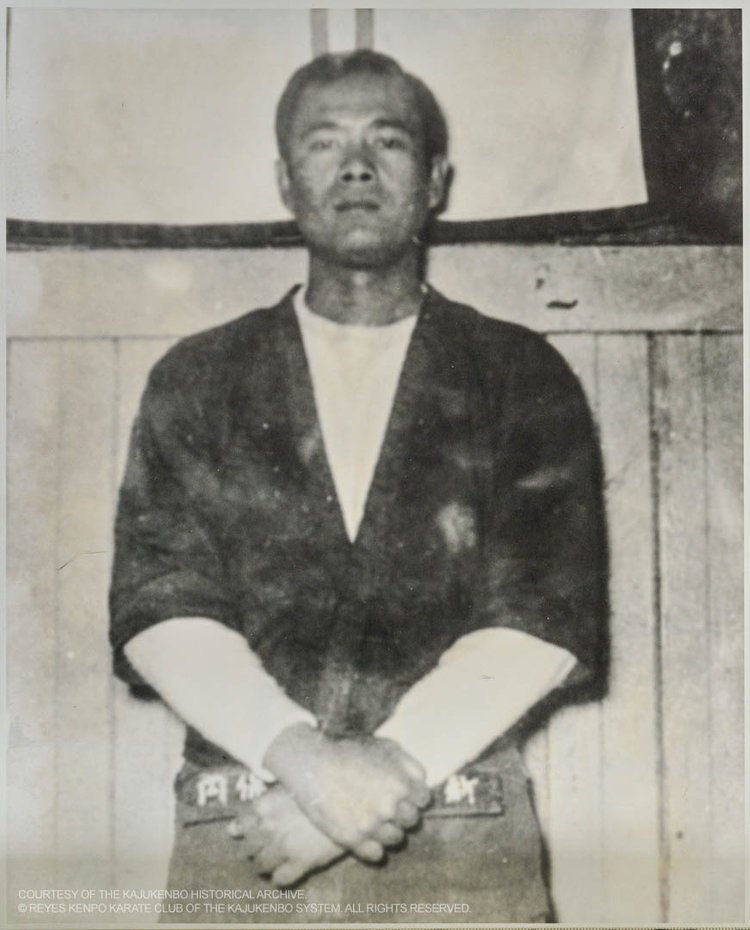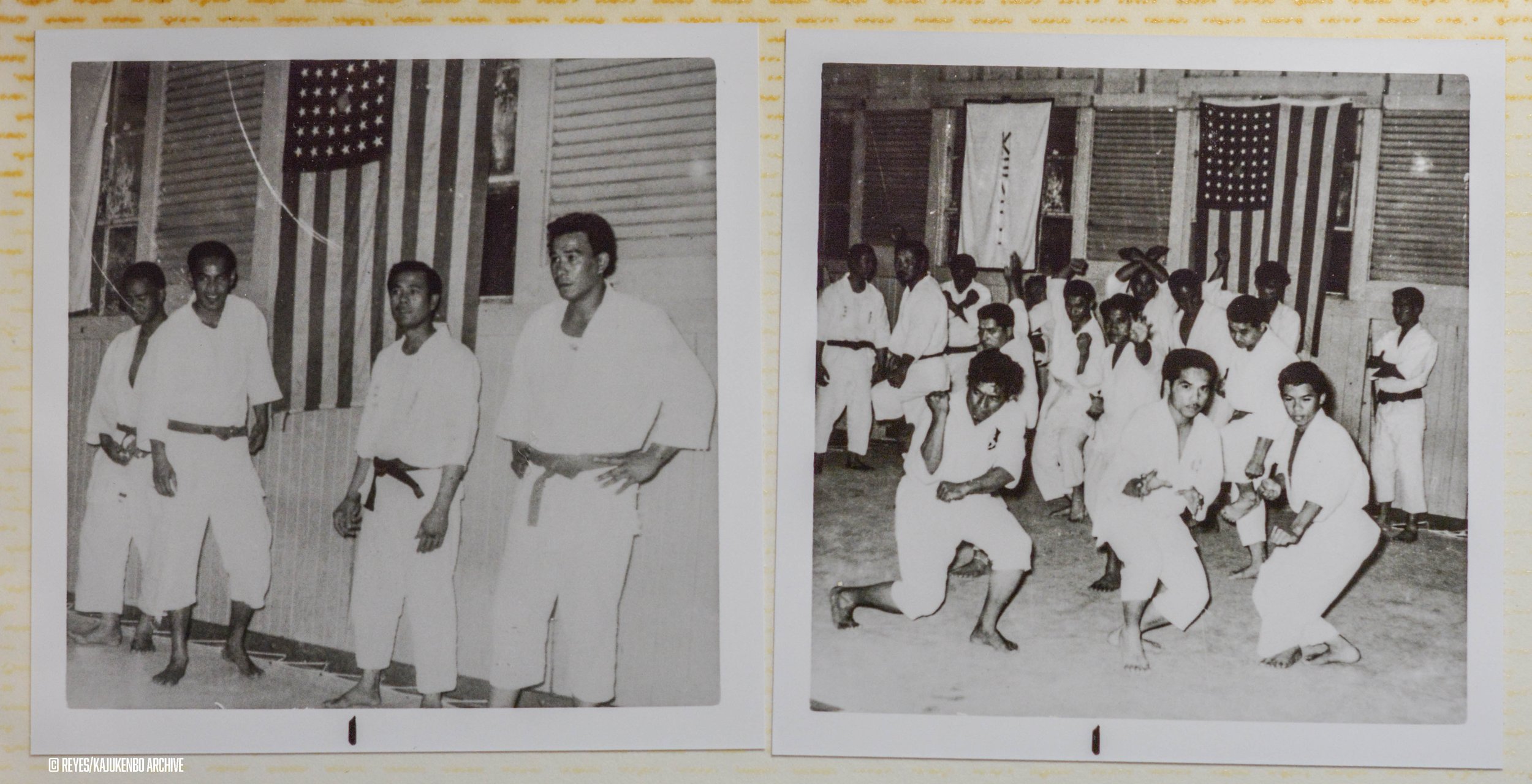Sijo Adriano Directo Emperado
(1926-2009)
Sijo Adriano Directo Emperado circa 1950 ©Reyes/Kajukenbo Archive
NAME: Adriano Directo Emperado
TITLE: SIJO / Professor
RANK: 10TH DEGREE
SYSTEM: KAJUKENBO
METHOD: EMPERADO METHOD
STYLE: HARD STYLE
SCHOOL: Kajukenbo Self Defense Institute (K.S.D.I.)
LIVED: 1926-2009
TRAINED: 1934-2009 (75 years)
INSTRUCTOR: William Kwai Sun Chow and James Mitosie
LINEAGE: EMPERADO
AFFILIATIONS: KSDI
Adriano Emperado (1926-2009) known fondly to his inner circle as "Nonoy," was a martial artist and founder of the Kajukenbo system, a hybrid martial art that combines elements of karate, judo, jujutsu, kenpo, and boxing. Emperado was born and raised in Hawaii, where he grew up learning various martial arts from his family members and other instructors.
Emperado was born on June 15, 1926 on the island of Oahu, Territory of Hawaii, to Juan Panis Emperado and Severina Directo Emperado. In the 1940s, Emperado began training in various martial arts, including judo, boxing, and kenpo. He later combined these arts with his own training and experience to create the Kajukenbo system, which was designed to be a practical and effective self-defense system for real-world situations.
Emperado co-founded the Black Belt Society, a group of martial artists who sought to share knowledge and promote the development of new martial arts. He and his brother Joe Emporado founded the Kajukenbo Self Defense Institute, which was dedicated to teaching Kajukenbo and promoting its principles and techniques.
Throughout his life, Emperado continued to refine and evolve the Kajukenbo system, and his influence can be seen in the numerous martial arts schools that have been established around the world. He is widely recognized as one of the most important figures in the development of modern martial arts, and his legacy continues to inspire and influence martial artists today.
Grandmaster Aleju Reyes and Sijo Emperado Late 60’s © Reyes/Kajukenbo Archive
©Reyes/Kajukenbo Archive. 1960’ Aleju Reyes, TBD, Sijo Emperado
Aleju Reyes
Sijo Emperado (center) cir 1950’s Palama Settlement ©Reyes/Kajukenbo Archive.
Joe Emperado cir 1950’s ©Reyes/Kajukenbo Archive.
HISTORY
During his boyhood years, Emperado found himself immersed in the various ethnic groups who had also migrated to the tiny island paradise. This diverse group brought many customs to Oahu, including their various forms of martial arts. Strongly influenced by his own Filipino heritage, Emperado began studying Escrima, a stick fighting art, at the young age of twelve. He soon moved to the island of Kauai, where he constantly worked to improve his knowledge of Escrima. A rigorous training routine of 4 to 6 hours daily allowed him to master single stick, heavy stick, and double stick techniques. After moving back to Oahu, Emperado maintained his proficiency in the Art of Escrima, guided by Master of Escrima, Alfred Peralta.
During his teen years, Emperado developed an interest for other forms of martial arts, beginning with the Japanese art of Jujitsu. He began Judo classes under Sensei Taneo at the Auld Lane School in Oahu's Palama area where he was taught soft, but effective, throwing techniques. During this time, young Emperado would often watch his uncle, Puka-Puka Panis Emperado, train in the American sport of boxing, which was fast becoming an island pastime. His uncle gained great recognition as the Flyweight Champion of Hawaii, and Emperado would soon follow in his footsteps.
Emperado’s amateur boxing experiences gave him insight into the American martial art techniques of angles, feinting, and the hard-packed punch, skills he would draw on for the rest of his life. Emperado held an impressive amateur record: nineteen wins (seventeen by knockout) and no losses.
Adriano D. Emperado Inside Kung Fu 1984
Sijo Emperado cir 1950’s Palama ©Reyes/Kajukenbo Archive.
At age 19, three years after the bombing of Pearl Harbor, Emperado chose to serve his country by enlisting in the Army’s famed 298th Division, 1st Filipino Regiment, 3rd Battalion. This regiment earned high awards for meritorious service in the Army’s Pacific Campaign. Emperado's drive to fight and compete never waned, and in addition to his military obligations, Emperado kept himself in top physical condition. He entered the Battalion's Golden Gloves Championships, winning the flyweight division. In 1945 Emperado was honorably discharged and returned to his beloved Hawaii where he would soon be introduced to the art of Kenpo.
Emperado’s introduction to the hard-hitting style of the Kenpo System came about through his friendship with Freddie Lara, a student of Professor William K. S. Chow. Lara arranged a meeting between Professor Chow and Emperado during a scheduled workout, and his interest in the art soon flourished. However, he quickly learned that induction into this closed-door society was not easy.
Verbal abuse from the upper rankers was a major obstacle; it was their job to find out what this new person was made of and why he wanted to join their self-defense club. The more Emperado withstood their abuse, the worse it became and, in turn, the more he endured. When Chow finally accepted Emperado as his student, he observed the strength Emperado possessed. The verbal abuse of the upper rankers was now replaced by the challenge of Chow’s relentless and grueling training. In spite of these hardships, Emperado continued to train six to eight hours daily, five days a week, and was soon given the chance for advanced training with Dr. Mitose. Emperado’s philosophical voids were filled as Mitose’s training intensified. And Emperado’s dedication only deepened as he began to realize a higher plane of involvement within the Kenpo System.
In 1949, Adriano Emperado received his Black Belt from both Professor William K. S. Chow and Dr. James Mitose. He became instrumental in forming a self-defense pact between the various martial arts instructors on Vineyard Street in the Palama Settlement area in Honolulu, most of whom shared and exchanged their knowledge amongst each other.
Emperado facilitated the creation of The Black Belt Society, whose sole purpose was the propagation of each martial arts instructor’s distinct style for the benefit of students searching for martial arts knowledge. It was during this period that Emperado ingeniously created the unique but devastating System of Kajukenbo.
On March 16, 1951, Emperado received his fifth degree from Dr. James Mitose. By this time, Emperado had been taught by many prominent figures in the martial arts including Professor Chow, Professor Mitosi, Professor Young, Professor Kim Fu, Professor Lum and Professor Wong. Their knowledge continually strengthened the internal structure of Emperado's Kajukenbo. Emperado is believed to be the first American to receive the high honor of Professorship at the Chinese Cultural Society of Hawaii from Great Grand Master Ho Gow of Hong Kong — a rank bestowed upon Emperado for his demonstrated proficiency, capability, and genius in creating the Kajukenbo System. ©1981 SGM Alan M. Reyes
Sijo Emperado passed away on April 4, 2009.
HIGHLIGHTS
1949 Adriano Emperado received his Black Belt from both Professor William K. S. Chow and Dr. James Mitose.
1950 Emperado Founded the Kajukenbo Self Defense Institute of Hawaii.
1945 Emperado was honorably discharged for the US Army.
1951 Emperado received his fifth degree from Dr. James Mitose.
2009 Sijo Emperado Passed Away.











